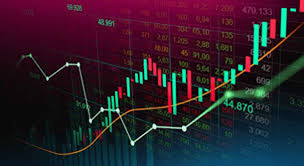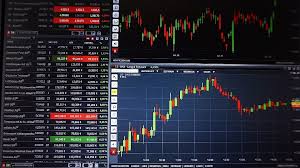
Opening a forex trading account is a crucial step for anyone looking to delve into the world of currency trading. The forex market is one of the largest and most liquid markets globally, providing ample opportunities for traders. However, before you can start trading, you need to set up an account with a reliable broker. In this guide, we will explore the steps to open a forex trading account, the essential factors to consider when choosing a broker, and tips to ensure a smooth trading experience. For those in Pakistan, you might also want to check open forex trading account Trading Brokers in Pakistan for reliable options.
Understanding Forex Trading
Forex, short for foreign exchange, involves trading one currency for another in the hopes of making a profit. For instance, if you believe that the euro will strengthen against the US dollar, you would buy euros and sell dollars. The difference in the buying and selling price is where traders make their profits. Understanding the market and having a well-thought-out strategy is crucial for success.
Why Open a Forex Trading Account?
Having a forex trading account is essential for participating in the forex market. An account allows you to execute trades, manage risk, and access various trading tools. Additionally, trading accounts often provide valuable resources such as market analysis, educational materials, and customer support, all of which can enhance your trading experience.
Steps to Open a Forex Trading Account
1. Choose a Reputable Broker
The first step in opening a forex trading account is to select a broker. It’s essential to choose a broker that is reputable, regulated, and meets your trading needs. Consider factors like spreads, commissions, the trading platform, and available research and educational tools. The broker should also provide good customer service, as you will rely on their support as a trader.
2. Determine the Type of Account
Forex brokers typically offer multiple account types, which can include standard accounts, mini accounts, and managed accounts. Standard accounts typically require a higher initial deposit, while mini accounts allow for smaller investments, making them suitable for beginners. Consider your trading style and comfort level when choosing an account type.
3. Complete the Application Process
Once you have chosen a broker and account type, you will need to fill out an application form. This is usually done online and will require you to provide personal information such as your name, address, date of birth, and contact details. Additionally, brokers may ask about your trading experience and financial situation to assess your suitability for trading.
4. Provide Identification and Verification
To comply with regulatory requirements and prevent fraud, brokers require clients to verify their identity. This process typically involves submitting copies of identification documents such as a passport or driver’s license, as well as proof of residence, like a utility bill or bank statement. The verification process can take anywhere from a few hours to a few days, depending on the broker.
5. Fund Your Account
After your account has been approved, the next step is to fund it. Most brokers provide various funding options, including bank transfers, credit and debit cards, and e-wallets. Be sure to check the minimum deposit requirements and any fees associated with depositing funds into your account.

6. Download the Trading Platform
Most forex brokers provide a trading platform that you’ll use to execute trades, analyze markets, and manage your account. Common trading platforms include MetaTrader 4 (MT4) and MetaTrader 5 (MT5). Download the platform, and familiarize yourself with its features, tools, and functionalities. Many brokers also offer demo accounts that allow you to practice trading with virtual funds before risking real money.
7. Start Trading
Once your account is funded and you’re comfortable with the trading platform, you can start trading. Begin with a clear trading strategy and risk management plan. Remember to stay informed about market trends and economic events that can impact currency prices.
Essential Tips for Forex Trading
1. Educate Yourself
Knowledge is power in forex trading. Take the time to educate yourself about currency pairs, economic indicators, and market analysis. Many brokers offer educational resources, webinars, and tutorials that can help enhance your skills.
2. Use a Demo Account
If you’re new to forex trading, consider starting with a demo account. This allows you to practice trading in a risk-free environment using virtual funds. It’s an excellent way to test your strategies and get comfortable with the trading platform.
3. Develop a Trading Plan
A well-defined trading plan is critical for success. Your plan should include your trading goals, risk tolerance, entry and exit strategies, and money management rules. Stick to your plan and make adjustments as you gain more experience.
4. Manage Your Risks
Forex trading involves significant risks, and it’s essential to have strict risk management measures in place. Avoid risking more than 1-2% of your trading capital on a single trade. Use stop-loss orders to limit potential losses and protect your account balance.
5. Stay Updated on Market News
Financial news and economic data releases can significantly impact currency prices. Keep informed about relevant news events and changes in economic indicators that may influence the forex market.
Conclusion
Opening a forex trading account is the first step to entering the exciting world of currency trading. By following the steps outlined in this guide, you can set up an account with a trustworthy broker and begin your trading journey. Remember to educate yourself continuously, develop a solid trading plan, and practice good risk management to navigate the market successfully. Whether you are a beginner or an experienced trader, staying informed and adaptable will serve you well in your forex trading endeavors.
